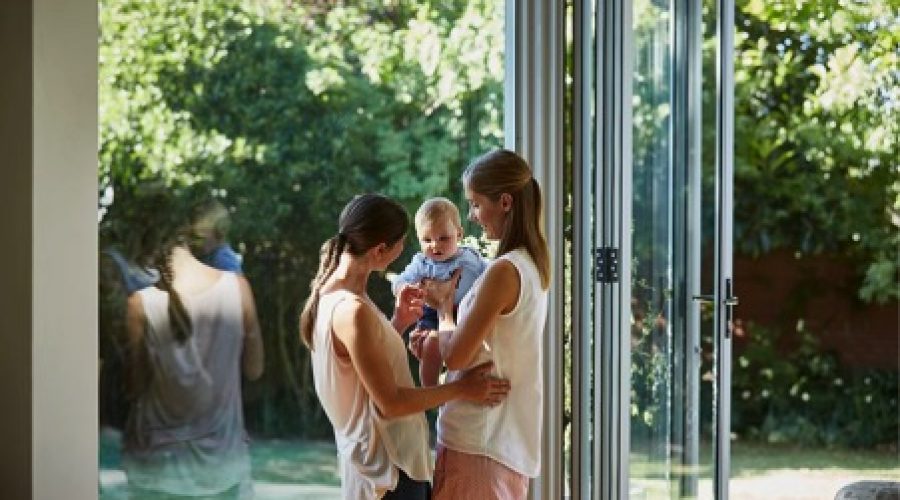Parenting costs are climbing and could soon enough will hit $1 million per every Australian family.
The last time any research was done into the cost of raising children in Australia, back in 2012, for an average family the cost of raising two kids was $812,000.
Since then, thanks to low inflation, that figure has kept steady; parenting costs now come in at an extra $2,000 per child, at $816,000.
It’s a huge sum, nearly twice the average mortgage in Sydney and not too far off $1 million.
No wonder the Australian birthrate is on the decline! And with kids staying at home longer, the costs of raising a family are dragging on and on.
Each stage of your child’s life is unique and comes with its own financial burdens, but if you are realistic about your financial situation, there are ways to save money and ease the economic strain of parenthood:
- Babies
Setting up home for a new baby can be very expensive. From the ages of 0-3, the main cost of raising a child is the stuff you suddenly find you can’t live without: change table, stroller, high chair, cradle. While it’s natural to want the best for your baby, you can save a fortune by opting for pre-loved baby equipment. There’s always a glut of second-hand baby essentials out there and most parents, once their kids are older, are happy to declutter and give away their old baby things. Or, if it must be new, keep it simple. Baby doesn’t know the difference between a basic IKEA highchair and a luxury one. And both are only going to end up covered in food … or worse!
- Toddlers
With children between the ages of three and five, the biggest expense associated with parenthood is childcare. Unfortunately, there’s no way of cutting corners when it comes to quality supervision for your children, but there is government assistance. The average cost of childcare is $8.50 an hour, but you can claim $4.30 of that as the Child Care Benefit, up to 50 hours ($215 per week). Before returning to work, it’s essential to sit down and crunch the numbers on the true cost of returning to work. Travel expenses, work clothes, bought lunches, child care – all these things can add up, meaning, sometimes, being a stay-at-home parent with part-time work can be more financially (and emotionally) rewarding than rushing back to a full-time job.
- School-age children
Those same work-family lifestyle choices are just as imperative once your children reach school age. The cost of your child’s education is very much down to you: whether you send them to the local state school, a church school or the very best private school. You need to work out what you can best afford; what you’re willing to sacrifice, both in terms of material possessions, but also in time spent away from your children working. If you opt for a private education for your kids, remember to take into consideration the extra costs that come with private schools: overseas trips, pricey uniforms and costly extracurricular activities.
But wherever your children go to school, it’s time for you to start teaching them the true meaning of money. Once their circle of friends expands, they’ll start to experience the peer pressure associated with the latest fashions and technology. They need to understand how much effort goes into earning the money needed to purchase a $30 Nike drink bottle, instead of the dollar-shop variety. By giving them an insight into how the family budget works, they’re less likely to put undue pressure upon it by demanding the latest gadgets.
- 18+
Unfortunately, even once your kids are old enough to support themselves, it doesn’t mean they will. Few children are economically self-sufficient by the age of 20, whether they’re out working or in higher education. But if you start your financial planning early, a lot of the fiscal pain can be removed from your child’s progression into adulthood.
The cost of a three-year degree is set to hit $50,000 by 2025 – that’s a considerable sum. But by creating a savings plan for your child when they’re still young, you can ensure that your child doesn’t finish their studies with a huge debt hanging over them.
There are lots of different types of saving accounts and ways to save – but many tie up your money for long periods of time, and at the moment term interest rates are at record lows.
Alternatively, by talking to your trusted mortgage broker, you could arrange new finance on your home and use a mortgage offset account to save for your child’s future instead. Your regular savings will help reduce your mortgage – earning a far better return than currently offered by many savings accounts – and your money will always be on hand, should you need to make a sudden withdrawal.
Becoming a parent is the most important step in a person’s life. And with a little advance financial planning, family planning should be one of the most rewarding, too – give or take the odd tantrum along the way.













